Logitech 2014 Switzerland Tech Day: The Hills Are Alive With The Sound Of Romer G
by Ian Cutress on December 8, 2014 4:00 PM EST
For most users who have discussed the multitude of peripherals on offer for PC users, Logitech is a name that features almost every time. I remember my G7 wireless mouse and G15 keyboard combination back in 2005-2006 when I was clan gaming, but Logitech’s history goes back way beyond this to some of the first early iterations of mouse design. As a result, Logitech is always on the periphery of discussions when it comes to building systems. In recent years however, Logitech’s focus has not always been obvious due to their splitting out into other segments such as audio and touch screen remote controls. That lack of focus has been examined internally and repurposed into targeting their core demographic. Now armed with their Logitech G brand for gaming for a number of quarters, Logitech invited influential media to their Daniel Borel Innovation Center in Lausanne, Switzerland, to get a taste of the company and their efforts moving forward.
Whenever the media are invited to a tech day like this, it is usually derived from the need to tell a story (and promote products). Logitech has many angles for a story, but the one they want to promote is the ‘Win with Science’ ethos. As someone with background in scientific research, it makes complete sense to me to take this approach, although it does not tell the whole story when developing a product. But Logitech is perhaps in a better position than most on this front.
Logitech is highly integrated with EPFL, the École Polytechnique Fédérale de Lausanne, a top-20 university worldwide with a focus on engineering. This gives several distinct advantages. Firstly, access to engineers and professors to collaborate on research. This means, in part, cooperating with professors with research grant funding to analyze various concepts of human interaction or developing better ways for that interaction. Secondly, it gives them access to students who have grown up with Logitech, offering a different perspective having grown up with the company in their gaming life as well as new ideas. With these in hand, when new inventions are made, it allows Logitech to invest in cross-licensing deals with the patent holders and to work closely with them for new technology. Part of this is benefited from Logitech’s testing facilities, which became part of the tour.
This mini-article from the event will cover two main topics – the tour, and the products.
The Tour
Maxime Marini, the Senior Director of Engineering, Gaming and Retail Pointing Devices at Logitech, started the day recalling Logitech’s history and work ethic. We recorded the video here, where Mr. Marini described that the company was founded in a town called Apples, and this was one of their first mice designed in 1980/81:
As mentioned earlier, part of the design process for Logitech involves bringing in students and gamers (see later) to discuss and help design the products. Insert obligatory ‘brainstorming’ interpretation:
As part of the involvement with the EPFL, Logitech sponsor a biannual LAN event as an additional source of feedback on new designs and concepts. Part of what makes a company successful is the experience and design, hence Logitech’s goal of the day to talk to the media. Mr Marini also touched upon Logitech’s manufacturing, indicating that they own their own factory in China rather than outsource to existing companies. Mr Marini was based in Asia for 10 years with Logitech, spending time at the factory actually being hands on assembling the components and talking to line operators about process optimizations and product control. We were told that the factory in Suzhou produces 3 million products a week, shipping to over a hundred countries. I can imagine at a future date that Logitech might invite media to the factory itself in order to get an even closer look into this side of the business.
Logitech G
The focus of the day was more towards Logitech G, the gaming arm of Logitech. In a presentation by Vincent Tucker, the director of Research and Development at Logitech, he took us through the thought process behind the G range. Despite Logitech always being associated with a gaming range, over recent years they have moved into many different peripheral areas.
Some of these are areas hotly contested by bulk production companies in China, such as tablet folios and Bluetooth keyboards, but some require significant research such as audio and focused peripherals. The G branding is a refocus towards the gaming crowd, with the discussion of the day around mice and keyboards more so than audio. With this comes Logitech sponsoring professional gaming teams such as Cloud 9 and other LOL/Hearthstone players, which they had invited to the Tech Day for some Q&A and gaming later in the day.
One of Logitech’s focuses is towards MOBA gaming (Multiplayer Online Battle Arena, or what we used to call Real Time Strategy but now controlling a single character rather than a god-view [thanks to Murloc for the context]) such as League of Legends (LoL) and Dota 2, as well as regular FPS and other genres. Mr Tucker described some of the processes that go towards designing a MOBA mouse, such as the G302 Daedalus Prime:
This includes analyzing where players need extra buttons, hand placement, grip type (claw vs. finger-tip) and the level of consistency in the clicking performance across a game. We were shown diagrams of where parts of the hand exhibit more tension for different designs as an example of the type of research Logitech performs. For wired mice it also extends to the flexibility of the cable as well. One might argue that what is good for professional gamers might not necessarily be good for general users. When this question was presented to Logitech, they answered with reference to the wired cable - where professionals prefer something simple and flexible, whereas home gamers might prefer a braided design for longevity.
Without trying to turn this into a slide fest, ultimately Logitech’s own images put it better than my phone could capture. Something such as click response over the range sounds simple enough when mentioned, although I remember devices such as my G5 having a differing click response over the range. Even my current non-Logitech mouse has an irregular click force profile over the range, though as a writer that does not affect me much, but I can understand the importance.
With the pro-gamers, we were told of the iterative design process, such as what is here above. This includes the arch position, the size of the device and even the materials used. Some gamers prefer a soft grip on the sides and hold onto their mouse tightly, whereas others keep a loose grip.
Along with function, in order for Logitech to produce a marketable product, there has to be an element of style to the device as a whole:
As part of the tour it was explained how even the presentation of the LEDs through parts of the device are modeled via ray tracing so the position of the LED can be optimized to give the glow desired.
As part of this R&D Talk, we were also introduced to the G910 Orion Spark keyboard. This keyboard was a major part of our tour, due to the new Romer G mechanical switches, but also due to the elements of design needed for it.
This means orientation of the keys (particularly WASD), wrist positions depending on the type of activity, and what looks like a lot of thermal imaging to see where the stresses of long-term gaming using the device can be reduced.
The shape of the keys on the G910 were also subject to research, whereby the angled design above allows gamers to slot their fingers into position easier, especially when they need to reach over for other keys away from their normal resting place. We were told that here is another point where professional gamers and regular users differ in preference – the regular users wanted a shallower dip into the key, whereas the professional gamers were happy either way.
The Romer G switch is new for the G910 as well, being a mechanical switch similar to MX Browns but of Logitech’s own design, featuring a shorter actuation time due to the shallower actuation depth. The profile is almost identical to the Browns, requiring the same force, but narrower in terms of distance.
Aside from the force profile and the key shape, the Romer G key features a double redundancy for connection to the motherboard, a PMMA based lens for shining the LED and a Logitech designed cap. Similar to the mice, the Logitech key was designed via ray tracing to find the optimal placement for the LED and lens for full brightness coverage. This ends up being important for keyboards that have multiple characters per key but require an even brightness throughout. Overall these new keys are designed for 70 million presses each, and the fact that Logitech is the sole producer of these keys allows them to bin for accuracy and performance rather than buying batches from Cherry and binning those separately with no guarantee.
As part of the discussion we were also joined by Ujesh Desai, a veteral of marketing formerly from NVIDIA who recently took on a role at Logitech involving management, marketing and brand direction of the whole Logitech G ecosystem.
I spent a good while speaking with Mr Desai about the direction of Logitech and the importance of gaming. Despite only being in the job for a few weeks, he said that the interesting work dynamic between his old company and Logitech, and despite moving from inside the PC case to the outside there was still a focus towards the user and he is able to bring ideas to the table immediately.




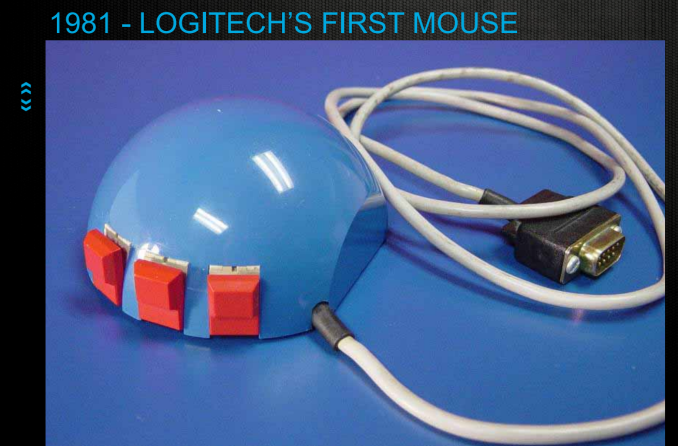


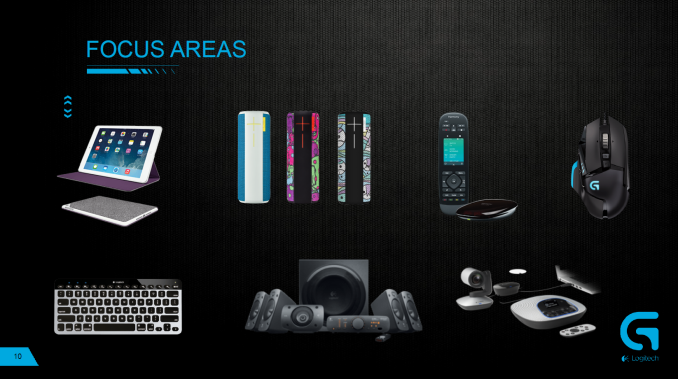
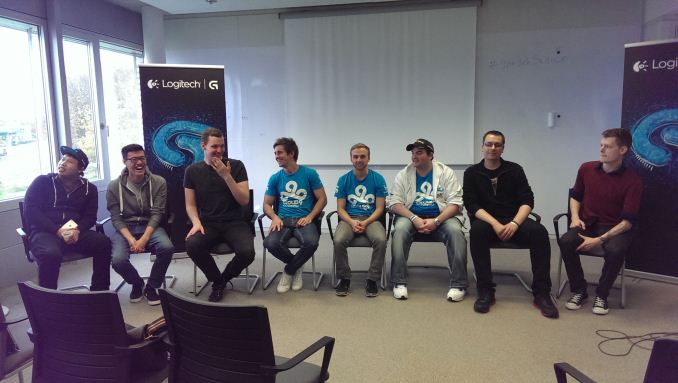
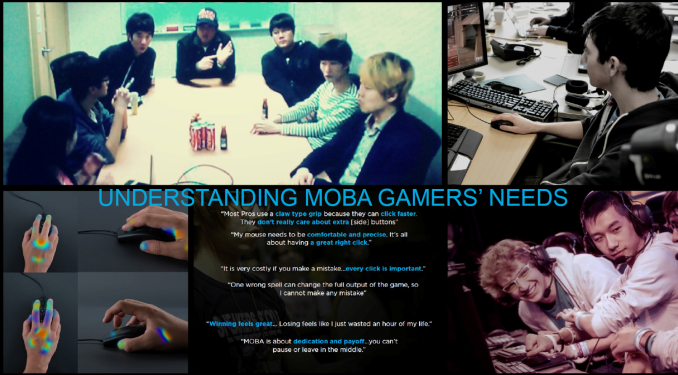
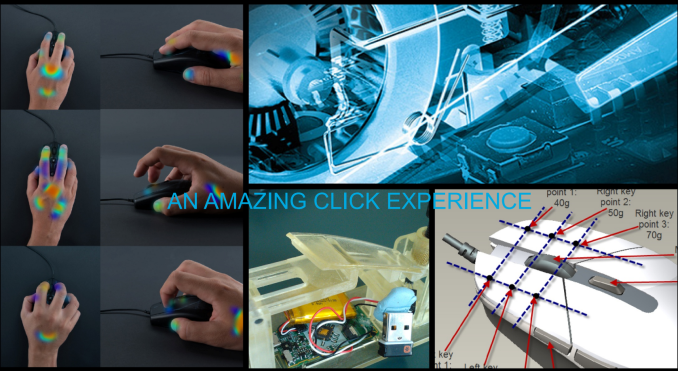
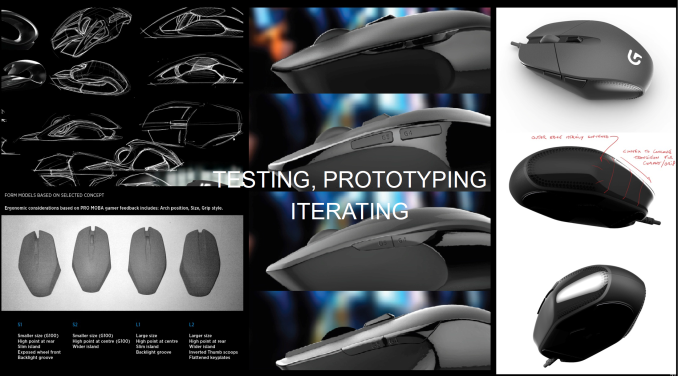
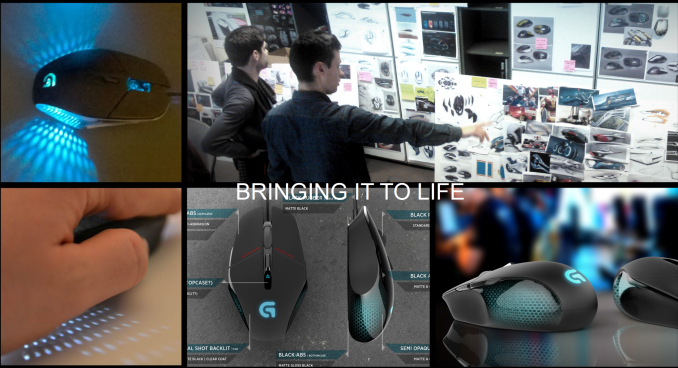

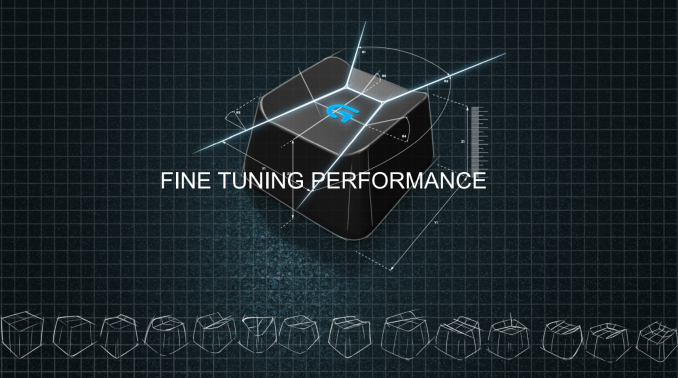
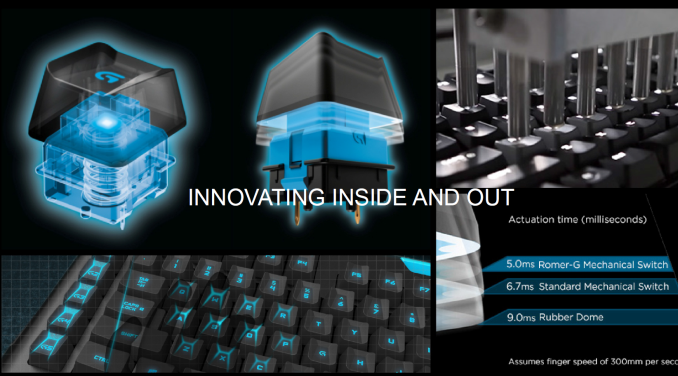
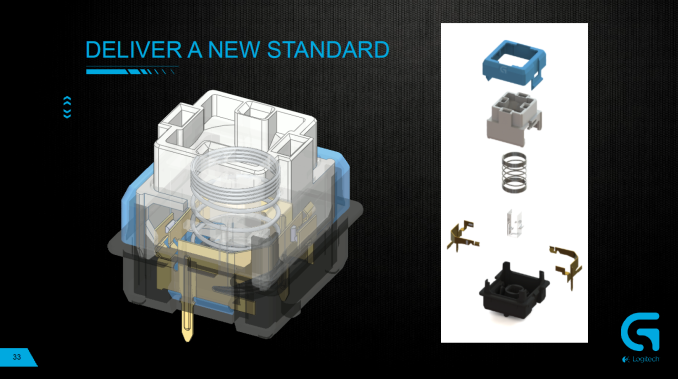









55 Comments
View All Comments
HyperText - Monday, December 8, 2014 - link
TS
M
WithoutWeakness - Tuesday, December 9, 2014 - link
I love how Turtle has that huge smile on his face is just about every photo ever taken of him.ddriver - Monday, December 8, 2014 - link
Had a M$ intellimouse optical, worked like charm for 12 years during period of hardcore FPS pro gaming. Eventually its cable gave out, had to replace the mouse. Searched long and hard, finally decided to buy a logictech G9 mouse, like 4 times the cost, cr@pped out in two years of daily use, barely any gaming, left button started dropping as it was held, could not select stuff, could not drag stuff, pi$$ed the hell out of me. Lousy overpriced garbage!eanazag - Monday, December 8, 2014 - link
I had a Logitech media mouse that I used with rechargeable batteries. It is over ten years old. Lots of gaming on it. I have replaced it with a Razer Orochi, which is Bluetooth and USB cabled. My Logitech is still in use for my kids gaming.I had a Logitech G15 keyboard that died long before I expected it to. It was the first with monochrome LCD. I think it lasted 4-5 years. I have an MS keyboard that is 2001; it is due for replacement but is mostly functional - you have to beat the backspace key. It sucks more for typing.
The point is that Logitech has had good products. The durability and longevity of their gaming line has been suspect. I have Logitech 5.1 THX speakers that I absolutely love. Best ~$100 I have ever spent on any sort of computer equipment - these were the step down from the wireless rear speaker models.
phdchristmas - Thursday, December 18, 2014 - link
I used an optical wired logitech mouse for 6 years. When i grew up and got a career i've dropped any kind of desktop and been using laptops since, then i got a M515 wireless mouse and still use it to date so far over 4 years. I used these mice for both gaming and work, no issues at all.Picked up a G602 2 months ago for gaming. Just for more buttons. Left click started to give way, then the right click, i fixed the issue by sanding down the edges of the click covers. Then the mouse 3 button gave away which killed all the buttons combos related to mouse 3.
They have a lot of marketing claiming theres science behind their G lines of products but i call bs. Sometimes the simple designs are the best designs.
Samus - Monday, December 8, 2014 - link
Yeah, I don't get it. It seems like every Logitech product I've ever owned has failed (granted, some have lasted a few years.) It's as if every single Logitech device I ever bought never made it through this testing.ddriver - Monday, December 8, 2014 - link
I really liked the G9, especially the weights drawer, because I like heavy mice (had a huge steel nut glued in the shell of the intellimouse because it was too light), but I really didn't expect the switches and the wheel to be of such inferior quality. Got to give it to logitech engineers, they managed to implement planned obsolescence for this product just right, it broke not 2 months after the warranty period expired.Had a logitech wheel too, the pedal was working lousy and eventually died, got surprised by the lousy mechanical design and the dirt cheap dime store potentiometer used.
Got better experience with the 2 sets of logitech speakers I have, 5-6 years in and still work. Seems like their that doesn't need to be clicked/pressed or interacted with mechanically is not uber bad, but their products which rely on mechanical parts - I'd rather stay away from in the future.
Samus - Tuesday, December 9, 2014 - link
WOW. I'm right with you there. The devices inevitably fail right out of warranty. This happened to my G9, G35, mm28, and so on.However, my Z5450's (5.1 speakers, wireless rear channels) pissed me off more than anything, because a rear speaker failed within warranty and Logitech was NOT able to replace it. They offered the Z5500's as a replacement. The problem being the Z5500's did not have wireless rear channels; the whole reason I purchased the system. I decided to keep the Z5450's for another year before the other rear channel finally failed and I ditched the system. I replaced it with the Creative Gigaworks G550W, which has worked perfectly for years.
I believe I could make a list of at least a dozen Logitech products I've owned that failed before they should have, whereas Creative, Microsoft (I still have the original Sidewinder Force Feedback from 2003, use it all the time) and Steel Series have all exceeded their lifespan expectations in comparison. Logitech is right up there with Razer in quality control.
Gigaplex - Tuesday, December 9, 2014 - link
So why do you keep buying Logitech if they keep failing on you?Valantar - Wednesday, December 10, 2014 - link
It's odd how one's mileage varies. I've almost exclusively used Logitech input devices for the past 15 or more years, and I've never had a single one break on me. My old cordless media desktop from the early 2000s is still fully functional, even after dismantling and spray painting it in a rather garish color scheme (I was 16 at the time, so please don't judge me). My diNovo Bluetooth media desktop is still usable seven or eight years in, but has been out aside due to the spacebar becoming sticky and unresponsive after I spilled Coke in it. I recently sold my original G15, still as good as new, and my G9 was put aside this past week as I've grown tired of its ergonomics - but it still works perfectly as well. It's been replaced by a G602, which I'm so far very, very happy with - the only thing I miss is in-mouse profiles. My Marsthin Mouse recently kind of died (it was constantly right clicking everything), but it was my media center mouse, and thus had been dropped from the living room table and couch more times than I can count (and it started acting up as a direct result of me dropping it). And lastly, I've been using an Illuminated Keyboard for the past six years, which has worked flawlessly - even with notoriously failure prone scissor switches.I'll gladly admit that I'm a little fanboyish here, but my experience with Logitech has truly been flawless, with a very wide range of products. Also, while I worked in electronics retail a few years ago, my experience with their support and RMA systems was second to none - and customers that contacted them directly verified this. Also worth a mention: they are the only peripheral company that sells (and even gives away if you ask under the right circumstances!) replacement parts for their products (wireless dongles, various adapters and so on). As I said, your mileage may obviously vary.